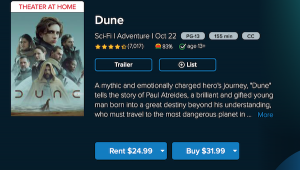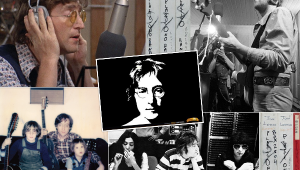TVs and Soundbars Need to Make Music Together

The Sonos Playbar I reviewed recently is a case in point. But, more than any other soundbar we’ve tested to date, it spotlighted an industry-wide problem with how we connect these devices. I’m referring to the fact that the vast majority of HDTVs won’t pass a multichannel Dolby Digital or DTS bitstream through their TosLink optical digital output.
This came up recently in Darryl Wilkinson’s review of Polk’s $800 SurroundBar 9000 IHT. It has four inputs, including two optical ports that can be selected with its remote. But for simplicity, most newbies would connect the TosLink output from their television to one of the optical ins and be done. Your source components—Blu-ray player and cable box—would connect to the TV via HDMI, and whenever you change the source with your TV remote, the sound follows along.
The problem is that the 9000 IHT has Dolby Digital and DTS processors on board to take advantage of the discrete multichannel bitstreams found in broadcasts and on discs, and most televisions would see these bitstreams at their HDMI inputs and strip them down to two-channel stereo Dolby Digital or stereo PCM digital audio for output via TosLink. The soundbar would never see a multichannel bitstream no matter what was being viewed.
Darryl tried it both ways—straight in from his Blu-ray player with multichannel bitstream versus two-channel in from his TV—and heard notable improvements with bitstream playback in the rendition of virtual surround effects, the openness of the sound, and the focus of specific sound effects and dialogue. For the consumer who really wants his money’s worth, the workaround is to hook your two primary sources straight into the optical inputs and switch the audio and video separately.
With the Sonos Playbar, I heard similar and even more dramatic differences between the two-channel and multichannel bitstream signals, mainly because it can be set up with fully discrete surround speakers. When the system was receiving two-channel audio from the TV and couldn’t rely on a Dolby Digital bitstream to tell it exactly what to send to those rear speakers, oh boy, could I hear it. You can read the review, but what’s key is that there was no workaround for this one. Determined to make the Playbar idiot-proof, Sonos provides just one optical input and instructs users to connect it in the fashion most likely to compromise sound quality. And even if you do plug a Blu-ray player straight into the Playbar, its omission of a DTS decoder means DTS Blu-ray soundtracks must be presented to the Playbar as stereo PCM anyway.
TV makers have told me that the cost of hardware and licensing is a deterrent, but they need to step up now with the growth of the soundbar category and provide both Dolby and DTS passthrough in their sets. They’ll sell more soundbars that way. They and other soundbar makers also need to acknowledge the current limitations in the marketplace and provide consumers with options and instructions that support the best possible audio from these products.
The soundbar’s explosive growth is the harbinger of a new, re-emerging audio market. That should be nurtured with an awesome listening experience people will anxiously demo for their friends, not hampered over incremental costs that end up cheating customers of the quality they paid for.





























































